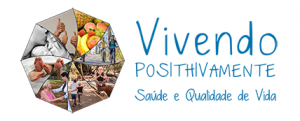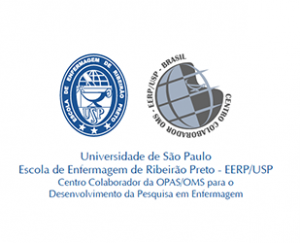Referências consultadas do volume 1
CUIDANDO DO CORPO
Alimentação Saudável: Tudo o que preciso saber e Exercício Físico: Ritmo para a vida
- ANTUNES, H K M. et al. Sleep deprivation and exercise. Revista Brasileira de Medicina do Esporte, v. 14, n. 1, p. 51-56, 2008.
- BARBOUR, KA.; BLUMENTHAL, JA. Exercise training and depression in older adults.Neurobiology of aging, v. 26, n. 1, p. 119-123, 2005.
- BOPP, CM. et al. Clinical implications of therapeutic exercise in HIV/AIDS.Journal of the Association of Nurses in AIDS Care, v. 14, n. 1, p. 73-78, 2003.
- BORGES, AC; ZIRZNOWSKY, R; OLIVEIRA, MA. Prescripción de actividades físicas para personas portadoras del virus HIV/SIDA . com, Revista Digital. Buenos Aires, Año 18, n. 184, 2013.
- Ministério da Saúde. Secretaria de Vigilância em Saúde. Programa Nacional de DST/Aids. Alimentação e nutrição para pessoas que vivem com HIV e Aids. Brasília; 2006a.
- Ministério da Saúde. Secretaria de Vigilância em Saúde. Programa Nacional de DST/Aids. Manual Clínico de Alimentação e Nutrição – Assistência a Adultos Infectados pelo HIV. Brasília, 2006b.
- Ministério da Saúde. Secretária de Vigilância em Saúde. Departamento de DST, Aids e Hepatites Virais. Recomendações para a prática de atividades físicas para pessoas vivendo com HIV e aids. Ministério da saúde. Brasília, 86 p, 2012.
- BRITO, Ciro José et al. O papel do exercício na era da terapia anti-retroviral fortemente ativa.Revista Brasileira de Ciência e Movimento, v. 18, n. 4, p. 100-108, 2011.
- CARTOCCI CM, NEUBERGER SB. Produção e Industrialização de Alimentos. Universidade de Brasília. Brasil, 85 p, 2008.
- CONFEF, Conselho Federal de Educação Física. AIDS e atividade física. Revista Educação Física, n. 28, 2008.
- DE PAULA CORRÊA, Marcelo; CEBALLOS, Juan Carlos. Solar ultraviolet radiation measurements in one of the most populous cities of the world: aspects related to skin cancer cases and vitamin D availability. Photochemistry and photobiology, v. 86, n. 2, p. 438-444, 2010.
- DE PAULA, Emmyline Perin et al. CONSIDERAÇÕES NUTRICIONAIS PARA ADULTOS COM HIV/AIDS NUTRITIONAL CONSIDERATIONS FOR ADULTS WITH HIV/AIDS.Revista matogrossense de enfermagem, v. 1, n. 2, p. 148-165, 2010.
- FLORINDO, A. A. et al. Leisure time physical activity prevents accumulation of central fat in HIV/AIDS subjects on highly active antiretroviral therapy. International journal of STD & AIDS, v. 18, n. 10, p. 692-696, 2007.
- GUARIGLIA, D. A. et al. Atividade física habitual em portadores de HIV/AIDS.Revista da Educação Física/UEM, Maringá, v. 18, p. 260-262, 2007.
- HAMILTON, M. T., HAMILTON, D. G., & ZDERIC, T. W. Exercise physiology versus inactivity physiology: an essential concept for understanding lipoprotein lipase regulation.Exercise and sport sciences reviews,32, n.4, p.161, 2004.
- HARVARD TO USDA: Check out the Healthy Eating Plate. Acessado em 2016 e Disponível em: http://www.health.harvard.edu/healthy-eating-plate
- HASKELL, William L. et al. Physical activity and public health: updated recommendation for adults from the American College of Sports Medicine and the American Heart Association.Circulation, v. 116, n. 9, p. 1081, 2007.
- HESTER, E. Kelly. HIV Medications An Update and Review of Metabolic Complications.Nutrition in Clinical Practice, v. 27, n. 1, p. 51-64, 2012.
- LEACH, L. L. et al. Suppl 1: M3: A systematic review of the effects of exercise interventions on body composition in HIV+ adults. The open AIDS journal, v. 9, p. 66, 2015.
- LINDEGAARD, B. et al. The effect of strength and endurance training on insulin sensitivity and fat distribution in human immunodeficiency virus-infected patients with lipodystrophy.The Journal of Clinical Endocrinology & Metabolism, v. 93, n. 10, p. 3860-3869, 2008.
- MAEDA, Sergio Setsuo et al. Recommendations of the Brazilian Society of Endocrinology and Metabology (SBEM) for the diagnosis and treatment of hypovitaminosis D.Arquivos Brasileiros de Endocrinologia & Metabologia, v. 58, n. 5, p. 411-433, 2014.
- MONTEIRO, Carlos Augusto; CASTRO, Inês Rugani Ribeiro de. Por que é necessário regulamentar a publicidade de alimentos.Ciência e Cultura, v. 61, n. 4, p. 56-59, 2009.
- NEIDIG, Judith L.; SMITH, Barbara A.; BRASHERS, Dale E. Aerobic exercise training for depressive symptom management in adults living with HIV infection.Journal of the Association of Nurses in AIDS Care, v. 14, n. 2, p. 30-40, 2003.
- OMS, FAO. Organización Mundial de la Salud, Organización de las Naciones Unidas para la Agricultura y la Alimentación. Manual sobre cuidados y apoyo nutricionales a los Enfermos de VIH/ SIDA. Aprender a vivir com el VIH/SIDA. Roma;
- O’BRIEN, Kelly K., et al. Effectiveness of aerobic exercise for adults living with HIV: systematic review and meta-analysis using the Cochrane Collaboration protocol.BMC infectious diseases, v. 16, n.1. p.182, 2016.
- O’BRIEN, Kelly K.; NIXON, Stephanie A. Evidence-based management of an individual living with HIV.Physiotherapy Canada, v. 62, n. 3, p. 202-205, 2010.
- OLIVEIRA, F. S. B.; ALVES, J. S. A.; PAES, Pedro Pinheiro. O exercício físico resistido como terapia não medicamentosa em pessoas que vivem com HIV/aids e lipodistróficas.Lecturas Educación Física y Deportes, v. 18, n. 181, p. 1-5, 2013.
- PINTO, Taciana et al. Benefits of exercise for patients with HIV/AIDS/Beneficios do exercicio fisico para pacientes com HIV/AIDS. Revista HUPE, v. 12, n. 4, p. 18-27, 2013.





